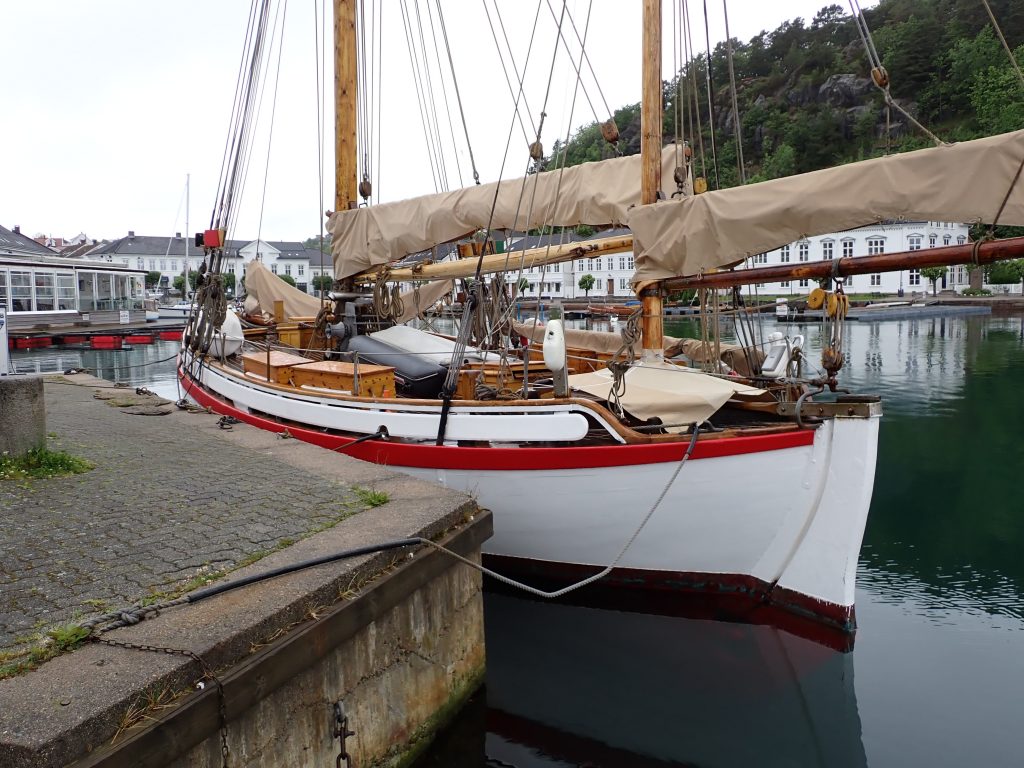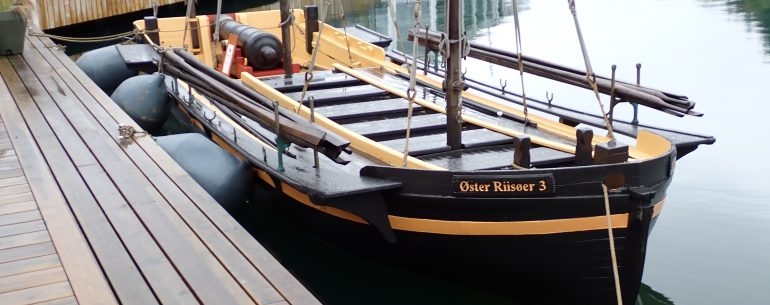Today was changeover day. Anne left and Simon and Sheila joined me to start heading across to Norway and with a favourable forecast (sort of!) we decided to head off straight away. So, Anne was unceremoniously put on an earlier train, so that we could head over to Risør. We knew that the first part would be fairly calm, so we were prepared for motoring and, sure enough, we did have to. Apart from a few ships around the place (how come they are always on a collision course even though there is miles of open sea!), it started fairly quiet, but gradually the breeze built. Eventually we had about 16-18 knots of breeze and were fairly hard on the wind so, with the swell building quite a bit, it became a little bumpy, but nevertheless fast, passage.
As we got into the gap between the islands which form a protective barrier to the town, it calmed down more or less immediately and we finally arrived around 7.30pm after an eleven and a half hour crossing – just over 60 miles.
Risør itself is an attractive town with white-painted houses (many of them bars) lining the front. It is one of the oldest towns in Southern Norway and is known as ‘the white town by the Skagerrak’. Initially they traded with Dutch boats who would come in to buy timber and this led to the town being known as a ladested (a Norwegian term for a ‘small seaport’) in 1630. This gave them various privileges and the town continued to prosper and was promoted to being a kjøpstad (‘market town’) in 1723.

The town almost vanished in 1861 when a fire burnt much of the town down, but it bounced back and was redesigned with wider streets and bigger gaps between houses. By the second half of the 19th century over 100 sailing vessels called Risør their home port with in excess of 1,000 sailors living there, but the shipping industry died after the steamship rose to prominence. The harbour now is just filled with small boats (mainly motorboats) though one interesting boat there was Risør II. She was a Colin Archer design of lifeboat (as many lifeboats in Norway were) built in 1914 by the Risør Båtbyggeri. She served as a lifeboat until 1936 and was then sold to England under private ownership. This of course meant that she saw service in the war from 1939 to 1945 with her owner John Doves-Matin skippering her. In 1986 she was bought by a foundations and returned to Norway. They totally restored her in the period 1986 to 1992 and she now takes groups out on the water.

